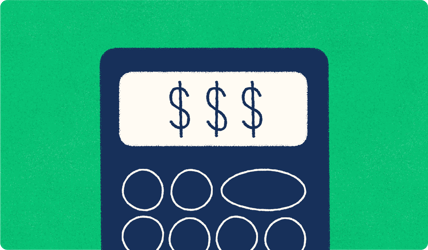
Whether you're a business, nonprofit organization, educational institution, or any other entity, reaching your target audience via SMS can be a powerful tool. But how do you know if your text messaging strategy is truly successful? The answer lies in measuring engagement through key performance indicators (KPIs).
In this blog post, we will explore what engagement means in the context of text messaging, why measuring it is crucial, and the essential SMS KPIs to track for a successful messaging strategy. Additionally, we'll provide actionable tips to improve SMS engagement. Let's dive in!
Table of Contents
- What Is Engagement?
- Why is Measuring Engagement Important?
- 6 KPIs for Measuring Text Message Engagement
- 10 Tips to Improve Your SMS Engagement Metrics
What is Engagement?
Engagement in text messaging refers to the interactions and responses that recipients have with the messages you send. It's a multifaceted concept, and its definition can vary from one business or organization to another.
The reason is simple: Not all organizations measure success in the same way. A retail business sending HR paperwork to new hires may be more concerned with data that points to click-through and completion rates. At the same time, a nonprofit organization may be primarily interested in measuring open rates or survey responses.
So, it's essential to define what success means for your specific context and align your KPIs accordingly.
Why is Measuring Engagement Important?
Measuring engagement in your text messaging strategy is crucial for several reasons.
It's an Effectiveness Assessment
It allows you to assess how effective your SMS efforts are in reaching and resonating with your audience. If your engagement rates are low, it may be time to reevaluate your messaging strategy.
It Provides You with Customer Insights
Engagement metrics provide valuable insights into your audience's preferences and behavior. This data helps you tailor your messages and offers to meet their needs and expectations better.
You Can Evaluate Your ROI
Understanding your messaging's impact on conversions and revenue is pivotal. You can link your messaging efforts to concrete financial outcomes by tracking engagement.
It Helps Optimize Your Messaging Strategy
Regularly monitoring engagement allows you to optimize your text messages by identifying what's working and what's not. This leads to more efficient resource allocation.
It Supports Relationship Building
Engaged customers or supporters are more likely to build lasting relationships with your brand or organization. This can lead to increased loyalty and advocacy.
Now that we've established the importance of measuring engagement, let's dig into the specific SMS KPIs you should track to gauge the success of your SMS strategy.
6 SMS KPIs for Measuring Text Message Engagement
KPIs are essential for evaluating the effectiveness of your SMS strategy. These metrics are valuable tools for assessing engagement and the impact of your messages. While KPIs are a universal concept, the specific numbers you should aim for may vary based on your industry and audience.
For instance, what schools can expect from their parents, students, or staff in terms of engagement might differ from what churches can expect from their community. The expectations and benchmarks can vary due to the unique characteristics and goals of different organizations and sectors.
Here, we provide an overview of key SMS KPIs and, where applicable, industry-specific SMS benchmarks to guide your measurement efforts. These benchmarks offer a starting point for evaluating your success. However, remember that the context of your organization and audience should also influence your interpretation of these metrics.
|
KPI Name |
Ideal Benchmark Range |
Calculation |
|
Delivery Rate |
85-98% |
Number of delivered messages / Number of sent messages) x 100 |
|
Click-Through Rate (CTR) |
2-10% |
(Number of clicks / Number of delivered messages) x 100 |
|
Conversion Rate |
1-5% |
(Number of conversions / Number of delivered messages) x 100 |
|
Churn Rate |
Below 2% |
(Number of unsubscribed recipients / Total number of recipients) x 100 |
|
Response Rate |
5-45% |
(Number of responses / Number of delivered messages) x 100 |
|
Time to Response |
Within 30 minutes of receipt |
Total time it takes for recipients to respond to messages / Number of responses |
1. Delivery Rate
The percentage of recipients who receive your SMS. It indicates if you're sending your messages to the right audience.
Benchmark: On average, delivery rates range from 85-98% across industries.
Calculation: (Number of delivered messages / Number of sent messages) x 100 = Delivery Rate
2. Click-Through Rate (CTR)
The percentage of recipients who click on links within the message. To track this, a service may need to shorten your link. This metric measures the effectiveness of your call to action and the engagement level of your audience.
Benchmark: CTRs can vary significantly, but a good CTR may range from 2-10%, depending on the industry.
Calculation: (Number of clicks / Number of delivered messages) x 100 = CTR
Text-Em-All plans to release this capability in the near future.
3. Conversion Rate
The percentage of recipients who complete the desired action, such as purchasing, signing up, or scheduling interviews. It assesses how well your messages drive the desired outcomes.
Benchmark: Conversion rates in various sectors may range from 1-5%.
Calculation: (Number of conversions / Number of delivered messages) x 100 = Conversion Rate
4. Churn Rate
The rate at which subscribers or recipients opt out from your messages. A lower churn rate indicates higher engagement and ongoing interest from your audience.
Benchmark: Ideally, you want to keep churn rates as low as possible, with an acceptable rate being below 2%.
Calculation: (Number of recipients who opted out / Total number of recipients) x 100 = Churn Rate
5. Response Rate
The percentage of recipients who reply to your SMS. It reflects the level of interactivity and engagement your messages generate.
Benchmark: Response rates can differ widely but generally range from 5-45%.
Calculation: (Number of responses / Number of delivered messages) x 100 = Response Rate
6. Time to Response
The average time it takes for a recipient to respond to your SMS. A faster response often signifies heightened engagement, while a slower response time can indicate less engagement.
Benchmark: Aim for a quick response time, as a slower response can indicate less engagement.
Calculation: Total time it takes for recipients to respond to messages / Number of responses
Example: If it takes a total of 600 minutes for 20 recipients to respond, the average time to response would be 600 minutes / 20 responses = 30 minutes per response.
10 Tips to Improve Your SMS Engagement Metrics
Now that you understand SMS KPIs, let's explore ten actionable tips to enhance your SMS engagement.
1. Segment Your Audience
Segmenting your audience involves dividing your recipients into smaller groups based on factors like demographics or behavior. You can ensure your content is relevant by sending more targeted SMS messages to specific segments, increasing engagement and response rates.
2. Create Compelling Content
Crafting compelling content means creating messages that are not only engaging but also concise and relevant. Your message's strong call to action can significantly boost click-through and conversion rates.
3. Nail Your Timing
When you send your messages is crucial. Send your messages at the right time to maximize open and response rates. Consider your audience's time zone and daily routines to increase engagement.
4. Perform A/B Testing
A/B testing involves experimenting with different messaging strategies to determine which resonates best with your audience. This method helps you refine your approach, optimizing engagement.
5. Offer Opt-In and Opt-Out Clarity
Making the opt-in and opt-out process clear and easy for recipients builds trust. It ensures you communicate with those who genuinely want to hear from you, enhancing engagement with an interested audience.
6. Personalize Your Messages
Personalization includes using recipient names and tailored content in your messages. This personal touch makes your messages more appealing and relevant to individual recipients, increasing engagement.
7. Create Multimedia Messages
When appropriate, incorporating images, GIFs, and videos adds visual appeal to your messages. Visual content can be more engaging than text alone, making your SMS stand out.
Read SMS vs. MMS Messaging: What’s the Difference?
8. Solicit Feedback
Encouraging recipients to provide feedback shows that you value their opinions. This not only enhances engagement but also provides insights for improving your SMS efforts.
9. Include Clear Calls to Action (CTA)
A clear and compelling call to action tells recipients what you want them to do. An unmistakable CTA can boost engagement by guiding recipients toward the desired action.
10. Monitor and Adjust
Monitoring your KPIs and adjusting your strategy is critical to improvement. Regular analysis lets you fine-tune your approach, ensuring ongoing engagement and success.
Moving Forward With Text-Em-All
Gauging the success of your mass texting platform is all about measuring engagement through the right KPIs. By understanding what engagement means for your specific context and tracking key metrics like open rates, CTR, conversion rates, and more, you can ensure that you are on the path to success.
Remember that improving SMS engagement is an ongoing process. Using a platform like Text-Em-All makes it easy to monitor the metrics that matter most to your success.
With Text-Em-All, you can continue to refine your messaging strategy and build stronger connections with your audience. So, measure your SMS engagement, apply these tips, and watch your messages thrive!













